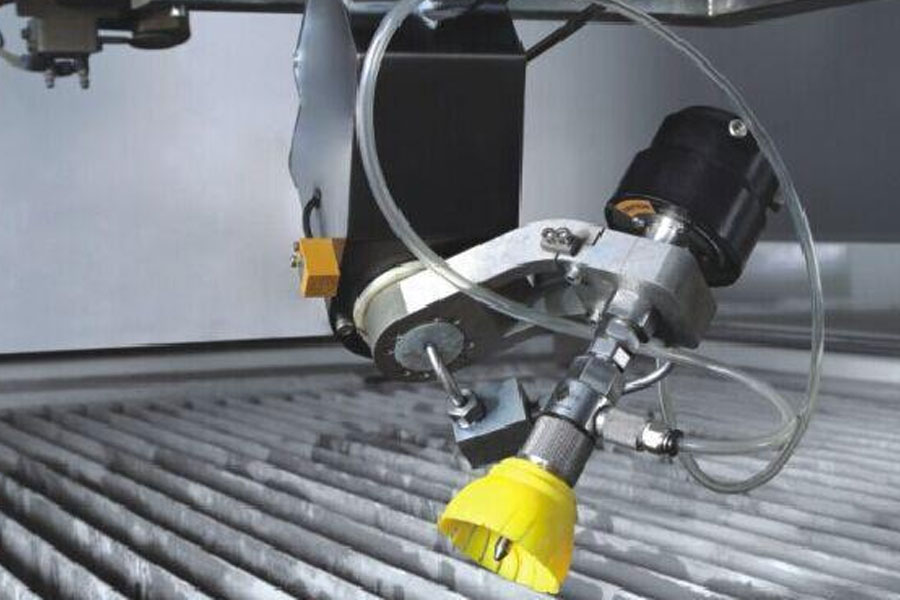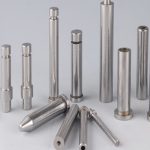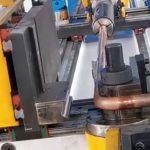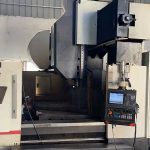The Difference Between 3+2 Positioning Machining And 5-axis Machining
|
The PTJ team was established in 2007 and has long been committed to the processing of high-precision, high-difficulty, and easily deformable metal and plastic parts, the small and medium-sized production and manufacturing of light Alloy and composite materials (such as Aluminum alloy, carbon fiber, etc.) parts, and the procurement of robot parts With customized services. Next, what are the advantages of 3+2 positioning machining and five-axis machining by PTJ? |

1. What is 3+2 positioning machining
When a three-axis milling program is executed, the two rotating axes of a five-axis machine tool are used to fix the cutting tool in an inclined position. The name of the 3+2 machining technology is also derived from this, which is also called positioning a five-axis machine tool, because The fourth axis and the fifth axis are used to determine the direction of the tool at a fixed position, rather than continuously during the machining process.
The principle of 3+2 positioning machining is essentially the realization of the three-axis function at a specific angle (ie “positioning”). Simply put, when the machine tool rotates the angle, the machining is performed in the ordinary three-axis manner.
2. What is 5-axis simultaneous machining
According to ISO regulations, when describing the movement of CNC machine tools, a left-handed rectangular coordinate system is used; the coordinate axis parallel to the main axis is defined as the Z axis, and the rotation coordinates around the X, Y, and Z axes are A, B, and C, respectively. Usually five-axis linkage refers to the linear interpolation movement of any 5 coordinates among X, Y, Z, A, and B.
3. The difference between 3+2 positioning and 5-axis linkage
3+2 positioning machining and 5-axis linkage machining are suitable for different industry objects. 5-axis linkage machining is suitable for surface machining, and 3+2 positioning machining is suitable for plane machining.
Advantages of 3+2 positioning machining:
- 1) A shorter, more rigid cutting tool can be used.
- 2) The tool can form a certain angle with the surface, and the spindle head can be extended lower and closer to the workpiece.
- 3) The tool movement distance is shorter and the program code is less.
Limitations of 3+2 positioning machining:
3+2 positioning machining is usually considered as setting a constant angle to the spindle. Complex workpieces may require many oblique views to cover the entire workpiece, but this will cause tool paths to overlap and increase machining time.
Advantages of 5-axis simultaneous machining:
- 1) There is no need for special fixtures during machining, which reduces the cost of fixtures, avoids multiple clamping, and improves mold machining accuracy.
- 2) Reduce the number of clamps used.
- 3) Many special tools are omitted during machining, thereby reducing tool costs.
- 4) During machining, the effective cutting edge length of the tool can be increased, the cutting force can be reduced, the service life of the tool can be increased, and the cost can be reduced.
Limitations of 5-axis simultaneous machining:
- 1) Compared with 3+2 positioning, the rigidity of the spindle is worse.
- 2) In some cases, the five-axis solution is not suitable, such as the tool is too short or the tool holder is too large, so that vibration cannot be avoided under any tilt angle.
- 3) Compared with a 3-axis machine tool, the machining accuracy error is larger.
Link to this article: The Difference Between 3+2 Positioning Machining And 5-axis Machining
Reprint Statement: If there are no special instructions, all articles on this site are original. Please indicate the source for reprinting:https://www.cncmachiningptj.com/,thanks!
 PTJ® provides a full range of Custom Precision cnc machining china services.ISO 9001:2015 &AS-9100 certified. 3, 4 and 5-axis rapid precision CNC machining services including milling, turning to customer specifications,Capable of metal & plastic machined parts with +/-0.005 mm tolerance.Secondary services include CNC and conventional grinding, drilling,die casting,sheet metal and stamping.Providing prototypes, full production runs, technical support and full inspection.Serves the automotive, aerospace, mold&fixture,led lighting,medical,bicycle, and consumer electronics industries. On-time delivery.Tell us a little about your project’s budget and expected delivery time. We will strategize with you to provide the most cost-effective services to help you reach your target,Welcome to Contact us ( [email protected] ) directly for your new project.
PTJ® provides a full range of Custom Precision cnc machining china services.ISO 9001:2015 &AS-9100 certified. 3, 4 and 5-axis rapid precision CNC machining services including milling, turning to customer specifications,Capable of metal & plastic machined parts with +/-0.005 mm tolerance.Secondary services include CNC and conventional grinding, drilling,die casting,sheet metal and stamping.Providing prototypes, full production runs, technical support and full inspection.Serves the automotive, aerospace, mold&fixture,led lighting,medical,bicycle, and consumer electronics industries. On-time delivery.Tell us a little about your project’s budget and expected delivery time. We will strategize with you to provide the most cost-effective services to help you reach your target,Welcome to Contact us ( [email protected] ) directly for your new project.
Link to this article:The Difference Between 3+2 Positioning Machining And 5-axis Machining
Reprint Statement: If there are no special instructions, all articles on this site are original. Please indicate the source for reprinting:Alloy Wiki,thanks!^^







